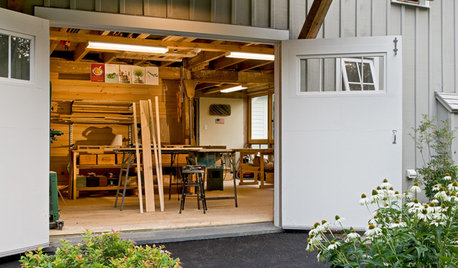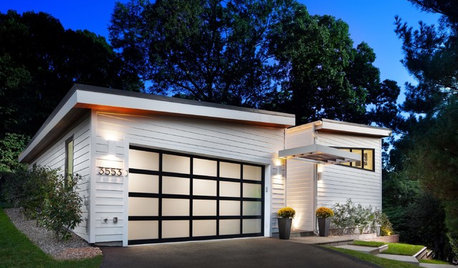Help Diagnose Craftsman Mower Not Starting
coolguy982
9 years ago
Related Stories

ARCHITECTUREHouse-Hunting Help: If You Could Pick Your Home Style ...
Love an open layout? Steer clear of Victorians. Hate stairs? Sidle up to a ranch. Whatever home you're looking for, this guide can help
Full Story
REMODELING GUIDESHouzz Tour: Turning a ’50s Ranch Into a Craftsman Bungalow
With a new second story and remodeled rooms, this Maryland home has plenty of space for family and friends
Full Story
LIFECreate a 'Forever House' Connection
Making beautiful memories and embracing your space can help you feel happy in your home — even if you know you'll move one day
Full Story
SMALL SPACESLife Lessons From 10 Years of Living in 84 Square Feet
Dee Williams was looking for a richer life. She found it by moving into a very tiny house
Full Story
FURNITUREWood Furniture Has Root Cause
Sustainability is just the beginning with Robin Wade's lovingly made 'rustic modern' wood furnishings
Full Story
BEFORE AND AFTERSA Surprise Design Makeover for a Pittsburgh Family Home
Before and After: Houzz partners with ‘The Ellen DeGeneres Show’ for a very special interior update. Check out the beautiful transformation
Full Story
MOST POPULARHow to Add a Backyard Shed for Storage or Living
Need a home office, a playspace or extra room for your stuff? Learn about off-the-shelf, prefab and custom sheds
Full Story
LANDSCAPE DESIGN7 Low-Maintenance Lawn Alternatives
Turf isn't the only ground cover in town. Get a lush no-grass lawn with clover, moss and other easy-care plants
Full Story
LIFEStressed Out? Try Hitting the Woodshop
Building things with your hands just might boost your mood while giving you personal new pieces for your home
Full Story
GARAGESKey Measurements for the Perfect Garage
Get the dimensions that will let you fit one or more cars in your garage, plus storage and other needs
Full Story






bill_kapaun
coolguy982Original Author
Related Professionals
Fillmore Landscape Architects & Landscape Designers · Redondo Beach Landscape Architects & Landscape Designers · Salisbury Landscape Architects & Landscape Designers · Clermont Landscape Contractors · Coram Landscape Contractors · East Hanover Landscape Contractors · Galveston Landscape Contractors · Hendersonville Landscape Contractors · Lynchburg Landscape Contractors · Panama City Beach Landscape Contractors · View Park-Windsor Hills Landscape Contractors · Antioch Landscape Contractors · Maplewood Landscape Contractors · Cypress Lake Carpenters · Tacoma Carpentersbill_kapaun
bill_kapaun
coolguy982Original Author
bill_kapaun
coolguy982Original Author
bill_kapaun
coolguy982Original Author
bill_kapaun
coolguy982Original Author
bill_kapaun